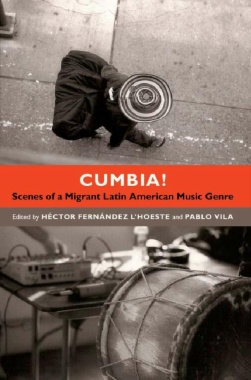Cumbia is a musical form that originated in northern Colombia and then spread throughout Latin America and wherever Latin Americans travel and settle. It has become one of the most popular musical genre in the Americas. Its popularity is largely due to its stylistic flexibility. Cumbia absorbs and mixes with the local musical styles it encounters. Known for its appeal to workers, the music takes on different styles and meanings from place to place, and even, as the contributors to this collection show, from person to person. Cumbia is a different music among the working classes of northern Mexico, Latin American immigrants in New York City, Andean migrants to Lima, and upper-class Colombians, who now see the music that they once disdained as a source of national prestige. The contributors to this collection look at particular manifestations of cumbia through their disciplinary lenses of musicology, sociology, history, anthropology, linguistics, and literary criticism. Taken together, their essays highlight how intersecting forms of identity—such as nation, region, class, race, ethnicity, and gender—are negotiated through interaction with the music.
Contributors. Cristian Alarcón, Jorge Arévalo Mateus, Leonardo D'Amico, Héctor Fernández L'Hoeste, Alejandro L. Madrid, Kathryn Metz, José Juan Olvera Gudiño, Cathy Ragland, Pablo Semán, Joshua Tucker, Matthew J. Van Hoose, Pablo Vila
- Contents
- Acknowledgments
- Introduction, Héctor Fernández L’Hoeste and Pablo Vila
- Chapter 1. Cumbia Music in Colombia: Origins, Transformations, and Evolution of a Coastal Music Genre / Leonardo D’Amico
- Chapter 2. ¿Pa’ dónde vas Marioneta? ¿Pa’ dónde va la gaita? La Cumbiamba Eneyé Returns to San Jacinto / Jorge Arévalo Mateus with Martín Vejarano
- Chapter 3. Cumbia in Mexico’s Northeastern Region / José Juan Olvera Gudiño
- Chapter 4. Rigo Tovar, Cumbia, and the Transnational Grupero Boom / Alejandro L. Madrid
- Chapter 5. Communicating the Collective Imagination: The Sociospatial World of the Mexican Sonidero in Puebla, New York, and New Jersey / Cathy Ragland
- Chapter 6. From The World of the Poor to the Beaches of Eisha: Chicha, Cumbia, and the Search for a Popular Subject in Peru / Joshua Tucker
- Chapter 7. Pandillar in the Jungle: Regionalism and Tecno-cumbiain Amazonian Peru / Kathryn Metz
- Chapter 8. Gender Tensions in Cumbia Villera’s Lyrics / Pablo Semán and Pablo Vila
- Chapter 9. Feliz, feliz / Cristian Alarcón
- Chapter 10. El “Tú” Tropical, el “Vos” Villero, and Places in Between: Language, Ideology, Music, and the Spatialization of Differencein Uruguayan Tropical Music / Matthew J. Van Hoose
- Chapter 11. On Music and Colombianness: Toward a Critique of the History of Cumbia / Héctor Fernández L’Hoeste
- References
- Contributors
- Index

